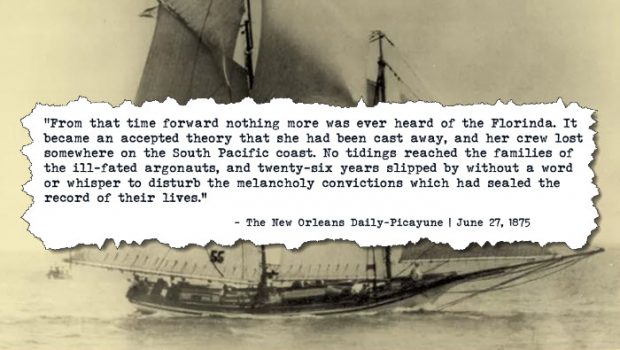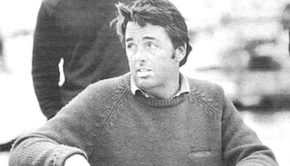The Dark and Forgotten Fate of Florinda
Published on August 20th, 2019
The accomplishments of today are rooted in the past history of the sport, and while we measure greatness now by offshore victories, world titles, and Olympic medals, the hall of famers from yesteryear triumphed over much different challenges.
One such story is the epic saga of a syndicate of friends and family members who set sail for the California Gold Rush on a coastal schooner from New Orleans to San Francisco via Cape Horn. But when they mysteriously vanished, they were feared lost for good until they re-emerged 26 years later.
In this story by Troy Gilbert, he details how this group captured the imagination of the entire world:
For old salts, there is no voyage more notorious or one that could hasten an already quick death than by raising sails and ‘doubling’ Cape Horn. Sailing below the 50th parallel in the Atlantic Ocean and rising above the 50th in the Pacific is known as ‘doubling’ the Cape, but battling what comes between those lines on a chart where the storm trod southern oceans meet is the real achievement.
In that hard place where winds and currents plow and roil through a geographic siphon between the southernmost point of South America and the frozen crags of Antarctica are the seas that define sailing legends and script nightmares.
There are scores of seafaring stories lost to time, and many deserve to ‘double’ their way through history and see the light of day again, and in 1849, California was beating the drums of a gold rush and calling all comers to her shores – by land and by sea.
170 years have elapsed since pioneers first answered the call and “pushed westward against an unforgiving wilderness,” fundamentally reshaping the country and sparking an economic powerhouse that has transformed culture and technology across the globe.
The California Gold Rush captivated America’s collective imagination; it became the stuff of legend and folklore, tall tales and bootstraps. And there may be no better story of the magnetic force that changed the direction of history and a young country’s self-identity than the dark and forgotten fate of a schooner that departed from New Orleans on July 6th, 1849.
At only 22, a forthright and earnest Harmon DeGraff Jones was looking to make a name for himself and support his pregnant wife Marion and their two-year-old son Livingston (presumably named in honor of Edward Livingston, the primary author of Louisiana’s Civil Code).- Full story









 We’ll keep your information safe.
We’ll keep your information safe.